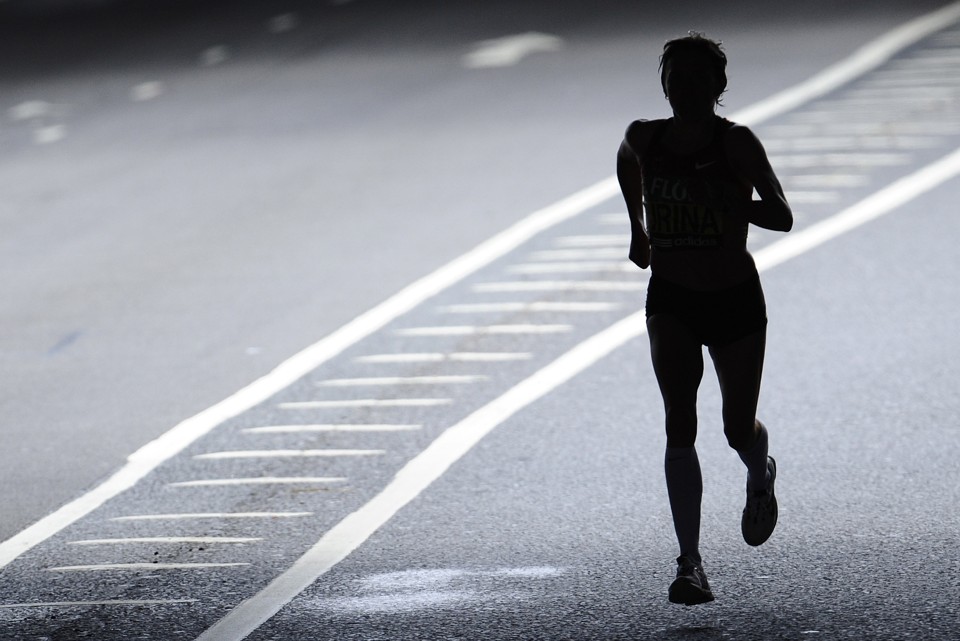From Homer’s The Iliad to A.E. Housman’s poem about an athlete dying young, there’s no shortage of literary depictions of running. “Move, as the limbs / of a runner do,” writes W.H. Auden. “In orbit go / Round an endless track.” There’s also a long tradition of writers leaving their pens or screens behind to stride along roads, tracks, and trails. Jonathan Swift, according to Samuel Johnson, would “run half a mile up and down a hill every two hours” during his 20s. Louisa May Alcott ran since her youth: “I always thought I must have been a deer or a horse in some former state,” she wrote in her journal, “because it was such a joy to run.” Despite this correlation, The New Yorker’s Kathryn Schulz recently lamented how few books capture the mindset of the runner in descriptive terms, citing Thomas Gardner’s new collection of essays Poverty Creek Journal as the best exception.
Related StoryWriters Shouldn’t Romanticize Rejection
Freedom, consciousness, and wildness: Running offers writers escape with purpose. When confronted with “structural problems” in her writing as the result of a “long, snarled, frustrating and sometimes despairing morning of work,” Joyce Carol Oates would ease her writing blocks with afternoon runs. For Oates and many other writers, running is process and proves especially useful for the type of cloistered, intensive work they do. But in many ways running is a natural extension of writing. The steady accumulation of miles mirrors the accumulation of pages, and both forms of regimented exertion can yield a sense of completion and joy. Through running, writers deepen their ability to focus on a single, engrossing task and enter a new state of mind entirely—word after word, mile after mile.
While on sabbatical in London in 1972, a homesick Oates began running “compulsively; not as a respite for the intensity of writing but as a function of writing.” At the same time, she began keeping a journal that ultimately exceeded 4,000 single-spaced, typewritten pages. “Running seems to allow me, ideally, an expanded consciousness in which I can envision what I’m writing as a film or a dream,” she wrote. Oates still runs along “a country road that goes up a hill” where she feels “there will be ideas waiting for me ... If I just sat in a room it wouldn’t be the same thing.” Don DeLillo also relished the transporting effects of running after his morning writing sessions: “This helps me shake off one world and enter another. Trees, birds, drizzle—it’s a nice kind of interlude.”
Whether their reasoning is practical or spiritual, many writers run with ritualistic devotion. The short-story writer Andre Dubus “ran for the joy and catharsis of it,” but like Oates and DeLillo, his running was also deliberately timed. Dubus kept a log book that detailed his daily exercise output and writing word count. His method came from an interpretation of Ernest Hemingway’s dictum to stop a story mid-sentence, perform physical exercise, and then return to the work the next day.
Why do writers so often love to run? Running affords the freedom of distance, coupled with the literary appeal of solitude. There’s a meditative cadence to the union of measured breaths and metered strides. Writers and runners both operate on linear planes, and the running writer soon realizes the relationship between art and sport is a mutually beneficial one. The novelist Haruki Murakami, a former Tokyo jazz-bar manager who would smoke 60 cigarettes a day, started running to get healthy and lose weight. His third novel had just been published, but he felt his “real existence as a serious writer [began] on the day that I first went jogging.” Continual running gave him the certainty that he could “make it to the finishing line.”
Murakami’s sentiment reminds me of the LSD—long, slow distance—of my college track days. My coach sent us on long afternoon runs without prescribed routes, simply giving us the directive of time. Once I built a tolerance for distance my runs became incubators for writing ideas. The steady, repetitive movement of distance running triggers one’s intellectual autopilot, freeing room for creative thought. Neuroscientists describe this experience as a feeling of timelessness, where attention drifts and imagination thrives.
Oates enjoyed this mental freedom and “special solitude” while running during her youth. She went through orchards, “through fields of wind-rustling corn towering over my head, along farmers’ lanes and on bluffs ... These activities are intimately bound up with storytelling, for always there’s a ghost-self, a ‘fictitious’ self, in such settings. For this reason I believe that any form of art is a species of exploration and transgression.” Exertion frees this fictitious, creative other, enabling the mind of writers who run to wander without inhibition. Writers tap into this ghost-self whenever they construct narratives and characters; writers who run have the benefit of a first draft on foot.
The steady accumulation of miles mirrors the accumulation of pages.“One of the luckiest things that can happen to a writer,” Reynolds Price notes, “is the gradual acquisition of the sense that one is doing it just for the sake of doing it, that it’s become a kind of lonely long-distance running which nonetheless has its own huge rewards.” Price is correct that this acquisition is gradual. The former United States Poet Laureate Kay Ryan captures the complicated feelings of both writers and runners: “I like to run. Actually, I don’t really like to run but I’ve done it for a million years.”
Writers, like runners, often like the idea of their pursuit more so than the difficult work. The appeal of a running regimen is how the miles not only condition the body, but free up a space for the creative mind. Which is perhaps why some writers, like Malcolm Gladwell, find themselves returning to running after a long absence. Gladwell, who recently completed the Fifth Avenue Mile in New York City in 5:03 minutes, sees the utilitarian impact running has on his projects: “I very explicitly use this time to work out writing problems.”
After my college running days ended, I chose sprints over distance, gained some pounds, and looked more like a fullback than a half-miler. Yet I missed those long, aimless runs, when the act of running was one of discovery, not dictated by the set distance of a track. I now run down open rural roads, and, against good sense, straddle the center yellow lines that yarn to the horizon. Since I’ve returned to distance running, I’ve changed the way I think about writing. Writing exists in that odd mental space between imagination and intellect, between the organic and the planned. Runners must learn to accept the same paradoxes, to realize that each individual run has its own narrative, with twists and turns and strains.
Writers and runners use the same phrase—“hit my stride”—to describe the moment when exertion and work become joy. Writers stuck on a sentence should lace their sneakers and go for a jog, knowing that when they return, they will be a bit sweatier, more tired, but often more charged to run with their words.




Kommentit
Kirjaudu sisään lisätäksesi tähän kommentin